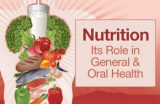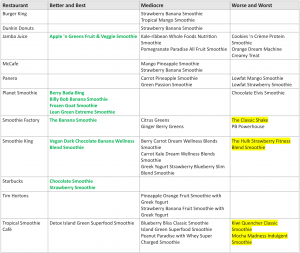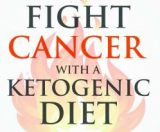
Nutrition and Oral Health
The relationship between nutrition, general health, and oral health is an important relationship for healthcare professionals and patients to understand. Oral diseases and disorders affect almost 4 billion people worldwide (Palmer & Stanski, 2015). The gravity of oral health on the overall health of our body is astronomical, and what we decide to eat, affects our oral health. “The oral cavity is a vehicle for the transmission of disease-causing microorganisms, as well as a portal, of entry for systemic infections. These pathogens or their cytotoxic by-products are known to cause dental caries, periodontal disease, and other local oral and pharyngeal infections. To boot, these pathogens and by-products can cause an immune response somewhere else in the body or assist in the progression of systemic disease (Palmer & Stanski, 2015).
As common as cavities are, many people do not know what they are, or why they form. Simply put, dental caries form when bacteria plaque adheres and manifests on the tooth surface. Dental caries can be a result of a “cariogenic diet, inadequate fluoride exposure, a susceptible host, and the presence of caries-causing bacteria in the oral cavity,” (Researchers at University of Maryland, 2017).
Dental caries are extremely common in our sugar-infested food supply. A diet high in simple sugars serves as the primary food source for bacteria (Palmer & Stanski, 2015). As a result, acids are produced and cause the tooth enamel to demineralize. To correct a common misconception, it is the amount of time that the dietary sugars are in contact with the bacteria, not the total amount of sugar consumed (Palmer & Stanski, 2015).
However, good oral hygiene and a healthful diet have not gone unnoticed. This relationship is attracting new research and consequently, new clinical applications. New findings have shown a benefit of probiotics on immunity, urogenital, and the respiratory tract. Furthermore, probiotics are commonly used for the prevention and treatment of gastrointestinal infections and disease. In respect to oral health, lactobacilli and bifidobacteria are probiotic microorganisms helpful in the prevention and treatment of oral infectious diseases, including dental caries and periodontal disease. These microorganisms are thought to inhibit oral pathogens, withstand oral environment, and antimicrobial action (Rastogi et al., 2011).
Oral Health, Diseases, & Disorders
Cancer
Immune compromising conditions, such as cancer, can result in oral manifestations such as mucositis, taste changes, xerostomia, and an increased risk in the development of dental caries. Malnutrition is a common diagnosis of those undergoing treatment since cancer therapies, such as chemotherapy, often alter an individual’s appetite and ability to chew, taste, and swallow. This, in turn, influences intake choice and frequency (Palmer & Stanski, 2015). Patients with oropharyngeal cancer (OPC), often undergo radiation to the oropharyngeal area, which can cause tooth loss, caries, painful stomatitis, xerostomia, fibrosis of the muscles of mastication, and loss of taste (Touger-Decker & Mobley, 2013). Furthermore, surgical procedures can affect mastication and swallowing function, which can also increase the energy and nutrient needs for healing.
Diets high in pickled vegetables, salted meat and fish, charcoal-grilled foods, alcohol, and smoking have been associated with increased oral cancer risk, while diets high in fresh fruits and vegetables have been associated with reduced risk, even accounting for smoking and alcohol use (Palmer & Stanski, 2015). Furthermore, an inverse relationship between fruit and vegetable consumption and risk of OPC was demonstrated (Touger-Decker & Mobley, 2013). The National Comprehensive Cancer Network recommends a team of registered dietitians, physicians, oral health care professionals, speech and language pathologists, and nurses, to ensure optimal treatment and management of cancer (Touger-Decker & Mobley, 2013).
Cardiovascular Disease
Inflammation seems to be a common theme of both periodontitis and cardiovascular disease. It is hypothesized that “localized chronic inflammation of periodontal tissues leads to systemic inflammation that can result in dyslipidemia and atherosclerosis,” (Palmer & Stanski, 2015). With that being said, Palmer & Stanski recommend smoking cessation, a well balanced diet and healthy body weight, and an increase in physical activity.
Obesity
Childhood obesity and dental caries share the causal commonality of excessive sugar consumption (Researchers at University of Maryland, 2017). Obesity and oral health have proven to be a good indicators of each other. Poor oral health is a good predictor of obesity (New Obesity Findings, 2016), while periodontal disease is more likely to occur in overweight and obese individuals, than normal healthy weight adults (Palmer & Stanski, 2015).
Diabetes
There is a relationship, not only between periodontal disease and cardiovascular disease, but also between periodontal disease and diabetes. Palmer & Stanski (2015) discussed research pertaining to an increased risk of periodontitis in those with diabetes, and the dependency of glycemic control on the severity of periodontitis. As a diabetic, oral manifestations, such as xerostomia, oral candidiasis, glossopyrosis, impaired oral wound healing, recurrent oral infections, and acetone breath, can occur (Palmer & Stanski, 2015). Visiting your local dentist, orthodontist, and other oral health practitioners is an opportune location for diabetes screening. Early diagnosis and treatment can improve overall patient health and avoid or reduce diabetes-related complications (Palmer & Stanski, 2015). Health practitioners in a dental setting can use two dental parameters, including the number of missing teeth and the percentage of deep periodontal pockets, to help identify pre-diabetes and diabetes (Lalla et al., 2016). Lifestyle interventions include losing a modest amount of weight, increasing physical activity, reducing calories and dietary fat, liming alcohol consumption, choosing whole grain or higher fiber carbohydrates in controlled quantities, and limiting refined carbohydrate sources (Palmer & Stanski, 2015).
Eating Disorders
Although discussions about eating disorders are often hush-hush, it is important to recognize the disorder and explain how it effects your general health and, for the sake of this article, oral health. Vomiting, due to bulimia, causes acidity in the mouth, resulting in demineralization of the tooth enamel, irritation of the mouth lining, enlargement of the salivary gland, dry mouth, and cheilosis, which is a condition characterized by red, dry, and cracked lips (Howat, Varner, & Wampold, 1990). Individuals suffering from anorexia are at risk of developing conditions, such as xerostomia (Touger-Decker & Mobley, 2013), mucositis, cheilitis, hypertrophy of salivary glands, and dental erosions (Ximenes, Couto, & Sougey, 2009).
Oral Health by Age
Infants and Children
Dental caries are extremely common in children. Factors involved in early childhood caries (EEC) include low socioeconomic status, minority status, older age, and sugared snack or beverage consumption. Consumption of sugar-sweetened beverages in children up to 24 months of age is a strong and identifiable predictor of ECC development. Frequent bottle feeding at night, or putting a baby to bed with a bottle, increases sugar exposure, resulting in tooth decay. Also, the extended and repetitive use of a training cup can cause the fluid to pool around the oral cavity and feed the acid-producing bacteria. Guidelines for infants include providing only water in bottles at nap time or bedtime, controlling the amount of sugar the child consumes, reducing intake of cariogenic foods, never dipping pacifiers in fermentable carbohydrates such as sugar, honey, or juice, introducing the cup at 6 months of age and begin to wean from the bottle, and cleaning their child’s teeth after each feeding.
Young and Elderly Adults
Although dental caries are more likely to occur in children, adults do not go unscathed, and sometimes, face other oral manifestations such as periodontal disease. Therefore, it is recommended for adults to limit excessive alcohol consumption, which can cause dehydration– reducing saliva flow and leading to tooth decay. As adults age, xerostomia, a common side effect of many prescription medications, increases the risk of developing dental caries. For those experiencing xerostomia, it is recommended you drink more water for oral lubrication, use sugar free gum to stimulate saliva production, and avoid foods and beverages that irritate dry mouths such as coffee, alcohol, carbonated soft drinks, and acidic fruit juices.
“For older adults, it is important to target individual needs based on concurrent systemic diseases and disabilities and associated oral manifestations relative to the disease and disability and its treatments,” (Touger-Decker & Mobley, 2013). Aging adults with tooth loss, dentures, or implants, lose the ability to bite and swallow food as efficiently. It is no surprise that malnutrition is common in those who struggle with masticating their food. Take a moment to imagine your chewing capacity with regular dentures versus your natural teeth. It is approximated that the chewing capacity is only 20-25% of natural teeth. Therefore it is important for healthcare providers to advise patients to use their dentures as their knife and fork as their teeth to cut food into smaller sizes. Implanted dentures have a greater ability to bite and chew food as compared to regular dentures.
Pregnancy
Periodontitis of a pregnant mother is associated with preterm birth and low birth weight babies. If the mother has high levels of cariogenic bacterial in the oral cavity, their child will too develop dental caries (Nagi, Sahu, & Nagaraju, 2016). Vomiting, or morning sickness, can result in repeated enamel exposure to gastric acid. Furthermore, pregnancy is known to alter the eating habits and cravings of a pregnant woman, which could result in deficiencies and malnutrition. Malnutrition in pregnancy can have damaging effects on the child (Palmer & Stanski, 2015).
CoQ10
CoQ10 appears to be the last antioxidant defense and the highest concentration found in the oral tissues (Battino et al., 2005). According to the research of Nakamura et al. (1974), those with gingivitis or periodontitis, have a CoQ10 deficiency in their oral tissues. It has been shown that the greater the CoQ10 deficiency, the greater the chance of developing an oral condition, such as gingivitis or periodontitis. In order for oral tissue to heal and repair, it needs energy. Due to the role of CoQ10 on energy production, it is presumed that increasing your intake of CoQ10 through your diet or supplementation can help in the tissue repair process.
Dietetic and Oral Health Practitioners
It is important for all healthcare professionals to acknowledge, and become familiar with other disciplines to promote optimal patient care. First clinical signs and symptoms of nutritional deficiencies and excesses, are usually seen in the oral tissues (Palmer & Stanski, 2015). Therefore, it is important for dietetic and oral health practitioners to communicate and work together in order to identify warning signs and symptoms. According to the Institute of Medicine, the four core competencies, in terms of recognizing oral disease risk, include assessments, provision of educational information on oral health, integration of oral health with diet counseling, and referrals as appropriate to oral health care professionals (Touger-Decker & Mobley, 2013). A 1990 survey concluded that dental practitioners had inadequate training in nutrition and did not consider nutrition to be important in their line of work (Stager & Levine, 1990) Alternatively, registered dietitians have also reported a lack of education and training on oral health screening. Dietetic practitioners in clinical practice are expected to include oral health as a component of their nutrition-focused physical examination, counseling, and monitoring of individuals. (Touger-Decker & Mobley, 2013). For dietetics practitioners, identifying non-normal oral conditions and providing referrals and education appropriate to any practice setting. It is important to seek continuing professional education on this topic or partner with an oral health care professional for hands on training to develop competency and proficiency. Oral health care professionals can provide baseline intervention to determine diet/nutrition risk, educate patients on diet relative to oral health, and, when in depth nutrition evaluation and diet counseling is needed, refer patients to an RD for medical nutrition therapy. (Touger-Decker & Mobley, 2013) However, neither oral health screening nor nutrition focused physical examination are cited as specific competencies or criteria in the Accreditation Commission for Education in Nutrition and Dietetics education standards for entry level practice.
Oral health and nutrition have a synergistic multidirectional relationship. Oral diseases, as well as other diseases with oral manifestations, impact an individual’s diet and nutritional status. Similarly, poor nutrition and diet can damage the oral cavity and expedite the progression of oral diseases (Tougher-Decker & Mobley, 2013). Therefore, it should be common practice, between dietetic and oral health practitioners, to screen, educate, and refer patients to promote optimal patient care.
Top 9 Foods That Damage Your Teeth (2017)
- Hard candies
- Chewing ice
- Citrus fruits and beverages
- Certain coffees
- Sticky foods such as dried fruits in trail mix
- Bagged chips
- Soda
- Alcohol
- Sport and energy drinks
References
Battino, M., Bompadre, S., Politi, A., Fioroni, M., Rubini, C., & Bullon, P. (2005). Antioxidant status (CoQ10 and vit. E levels) and immunohistochemical analysis of soft tissues in periodontal diseases. Biofactors, 25(1‐4), 213-217. doi:10.1002/biof.5520250126
Essex, G., Miyahara, K., & Rowe, D. J. (2016, December). Dental hygienists’ attitudes toward the obese population. Journal of Dental Hygiene, 90(6), 372+. Retrieved from http://go.galegroup.com.eduproxy.tc-library.org:8080/ps/i.do?p=AONE&sw=w&u=new30429&v=2.1&it=r&id=GALE%7CA480593478&sid=summon&asid=fc12ec832812727c43c878a914fe0ca6
Fuchs, N. K. (2014, June). Ask your dentist if you have diabetes. Women’s Health Letter, 20(6), 4+. Retrieved from http://go.galegroup.com.eduproxy.tc-library.org:8080/ps/i.do?p=AONE&sw=w&u=new30429&v=2.1&it=r&id=GALE%7CA372449701&sid=summon&asid=9e9c953375ac348276ad0e1c600133da
Hayes, M. J., Franki, J., & Taylor, J. A. (2016, February). The frequency of dietary advice provision in a dental hygiene clinic: a retrospective cross-sectional study. Journal of Dental Hygiene, 90(1), 12+. Retrieved from http://go.galegroup.com.eduproxy.tc-library.org:8080/ps/i.do?p=AONE&sw=w&u=new30429&v=2.1&it=r&id=GALE%7CA447638203&sid=summon&asid=a6fa2eedff7329c39bd4aed8b3a8ecf9
Howat, P. M., Varner, L. M., & Wampold, R. L. (1990). The effectiveness of a dental/dietitian team in the assessment of bulimic dental health. Journal of the American Dietetic Association, 90(8), 1099+. Retrieved from http://go.galegroup.com.eduproxy.tc-library.org:8080/ps/i.do?p=AONE&sw=w&u=new30429&v=2.1&it=r&id=GALE%7CA9329499&sid=summon&asid=290179fe9f1815129bb3763927ec64c6
Lalla, E., Kunzel, C., Burkett, S., Cheng, B., & Lamster, I. (2011). Identification of Unrecognized Diabetes and Pre-diabetes in a Dental Setting. Journal of Dental Research, 90(7), 855-860. doi:10.1177/0022034511407069
Nagi, R., Sahu, S., & Nagaraju, R. (2016). Oral health, nutritional knowledge, and practices among pregnant women and their awareness relating to adverse pregnancy outcomes. Journal of Indian Academy of Oral Medicine and Radiology, 28(4), 396. Retrieved from http://go.galegroup.com.eduproxy.tc-library.org:8080/ps/i.do?p=AONE&sw=w&u=new30429&v=2.1&it=r&id=GALE%7CA483684361&sid=summon&asid=6958060b9da52533d015a10bb53575bc
Nakamura, R., Littarru, G. P., Folkers, K., & Wilkinson, E. G. (1974). Study of CoQ10-enzymes in gingiva from patients with periodontal disease and evidence for a deficiency of coenzyme Q10. Proceedings of the National Academy of Sciences of the United States of America, 71(4), 1456-1460. doi:10.1073/pnas.71.4.1456
New Obesity Findings from School of Dentistry Described (Association between oral health status and central obesity among Brazilian independent-living elderly). (2016, December 17). Obesity, Fitness & Wellness Week, 207. Retrieved from http://go.galegroup.com.eduproxy.tc-library.org:8080/ps/i.do?p=AONE&sw=w&u=new30429&v=2.1&it=r&id=GALE%7CA473578473&sid=summon&asid=45173e0d21d0a192b8adc61914272374
Palmer, C., & Stanski, R. (2015). Oral health and nutrition as gatekeepers to overall health: We are all in this together. European Journal of General Dentistry, 4(3), 99. doi:10.4103/2278-9626.163319
Rastogi, P., Saini, H., Dixit, J., & Singhal, R. (2011). Probiotics and oral health. National Journal of Maxillofacial Surgery, 2(1), 6. doi:10.4103/0975-5950.85845
Researchers at University of Maryland Release New Data on Obesity (Introduction to proceedings of healthy futures: engaging the oral health community in childhood obesity prevention national conference). (2017, May 20). Obesity, Fitness & Wellness Week, 3964. Retrieved from http://go.galegroup.com.eduproxy.tc-library.org:8080/ps/i.do?p=AONE&sw=w&u=new30429&v=2.1&it=r&id=GALE%7CA491680036&sid=summon&asid=b5e40f6c05bdceb59e2fc19e4c67f29f
Stager, S. C., & Levine, A. M. (1990). The need for nutritionists: a survey of dental practitioners. Journal of the American Dietetic Association, 90(1), 100+. Retrieved from http://go.galegroup.com.eduproxy.tc-library.org:8080/ps/i.do?p=AONE&sw=w&u=new30429&v=2.1&it=r&id=GALE%7CA8350897&sid=summon&asid=ec1d5425a651102095044f2f4f34ad3a
Touger-Decker, R., & Mobley, C. (2013). Position of the Academy of Nutrition and Dietetics: Oral Health and Nutrition. Journal of the Academy of Nutrition and Dietetics, 113(5), 693-701. doi:10.1016/j.jand.2013.03.001
Top 9 Foods That Damage Your Teeth. (n.d.). Retrieved August 11, 2017, from http://www.mouthhealthy.org/en/nutrition/food-tips/9-foods-that-damage-your-teeth
Ximenes, R., Couto, G., & Sougey, E. (2009). Eating disorders in adolescents and their repercussions in oral health. International Journal of Eating Disorders. doi:10.1002/eat.20660
Written by Nicole Lindel ~ Nutrition Education Master’s Student at Columbia University











